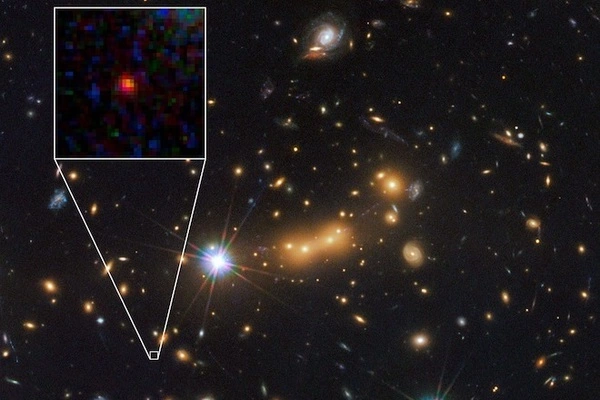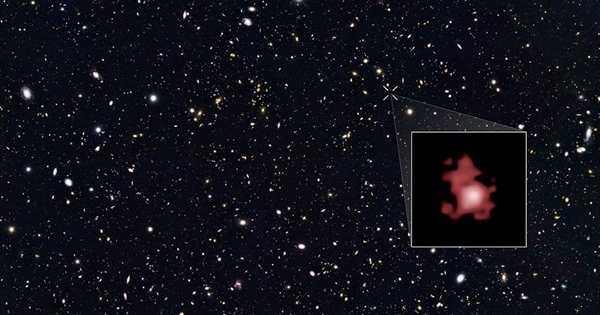A team of astrophysicists from the University of Copenhagen has discovered a significant result concerning star populations beyond the Milky Way. The findings could alter our understanding of a wide range of astronomical phenomena, such as the formation of black holes and supernovae, as well as why galaxies die.
How stars appear in distant galaxies has been a mystery for as long as humans have studied the heavens. A team of researchers from the University of Copenhagen’s Niels Bohr Institute disproved previous theories about stars beyond our own galaxy in a study published today in The Astrophysical Journal.
Since 1955, it has been assumed that the composition of stars in the universe’s other galaxies is similar to that of the hundreds of billions of stars in our own – a mix of massive, medium mass, and low mass stars. However, using observations from 140,000 galaxies across the universe and a variety of advanced models, the team tested whether the same distribution of stars seen in the Milky Way applies elsewhere. The answer is no. Stars in distant galaxies are typically more massive than those in our “local neighborhood.” The discovery has a significant impact on what we believe we know about the universe.
“Astronomers can learn a lot from the mass of stars. When the mass of a massive star changes, so does the number of supernovae and black holes that form. As a result of our findings, we’ll have to reconsider many of our previous assumptions, because distant galaxies look very different from our own” says Albert Sneppen, a graduate student at the Niels Bohr Institute and the study’s first author.
We can see a new pattern now that we can decode the mass of stars; the less massive galaxies continue to form stars, while the more massive galaxies stop producing new stars. This points to a strikingly universal pattern in the death of galaxies.
Albert Sneppen
Analyzed light from 140,000 galaxies
For more than fifty years, researchers assumed that the size and weight of stars in other galaxies were similar to our own because they couldn’t observe them through a telescope, as they could with stars in our own galaxy.
The distance between galaxies is measured in billions of light-years. As a result, only the light from their brightest stars ever reaches Earth. For years, researchers around the world have struggled to determine how stars in other galaxies were distributed, forcing them to believe that they were distributed similarly to the stars in our Milky Way.
“We’ve only seen the tip of the iceberg, and we’ve known for a long time that expecting other galaxies to look like ours was a bad idea. No one has ever been able to prove that other galaxies have different star populations. This research has enabled us to do so, potentially leading to a better understanding of galaxy formation and evolution “Associate Professor Charles Steinhardt, one of the study’s co-authors, says
The researchers used the COSMOS catalog, a large international database of more than one million observations of light from other galaxies, to analyze light from 140,000 galaxies. These galaxies are distributed from the nearest to farthest reaches of the universe, from which light has traveled a full twelve billion years before being observable on Earth.

Massive galaxies die first
The new discovery, according to the researchers, will have far-reaching implications. For example, it is still unknown why galaxies die and cease to form new stars. According to the new findings, this could be explained by a simple trend.
“We can see a new pattern now that we can decode the mass of stars; the less massive galaxies continue to form stars, while the more massive galaxies stop producing new stars. This points to a strikingly universal pattern in the death of galaxies” Albert Sneppen concludes.
The study was carried out at the Cosmic Dawn Center (DAWN), a Danish National Research Foundation-funded international basic research center for astronomy. The Niels Bohr Institute at the University of Copenhagen and DTU Space at the Technical University of Denmark collaborated on DAWN.
Through observations with the largest telescopes, as well as theoretical work and simulations, the center is dedicated to understanding when and how the first galaxies, stars, and black holes formed and evolved in the early universe.
About the study
- The IMF — Initial Mass Function — is the empirical function used to describe the distribution of masses for a population of stars. It encompasses the distribution of low mass, medium mass, and massive stars observed by astronomers across the Milky Way. Historically, researchers have assumed that the IMF is universal and that it applies to all galaxies in the universe.
- The researchers examined how much light galaxies emit at different wavelengths in their analysis of galaxies. Large massive stars are bluish in color, whereas small and low mass stars are yellow or red. This means that measuring the distribution of large versus small stars in a galaxy can be done by comparing the distribution of blue versus red colors.
- The researchers examined 140,000 galaxies scattered across the universe over the last 12 billion years of its existence.
- The findings show that stars in distant galaxies are typically more massive than those in our own backyards, and that the farther away the researchers look, the more massive the average star becomes.





